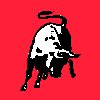
 P400, P400S Overhaul Manual
P400, P400S Overhaul Manual| CHARACTERISTICS AND
GENERAL DATA 1. WEIGHTS AND MEASURES 2. CAPACITIES 3. ENGINE 4. IGNITION SYSTEM 5. TRANSMISSION 6. CHASSIS 7. PERFORMANCE 8. MAINTENANCE DATA 8.1 Engine Oil Change 8.2 Brakes 8.3 Lubrication 8.4 Cooling System 8.5 Antifreeze 8.6 Tire Pressure 8.7 Break-in Procedure 8.8 Identification Tags TECHNICAL OVERHAUL INSTRUCTIONS AND ASSEMBLY PROCEDURES 1 ENGINE 1.1 Insertion of Cylinder Liner into Cylinder Block 1.2 Extraction of Cylinder Liner from Cylinder Block 1.3 Tolerance Between Cylinder Liners and Pistons 1.4 Assembly of Main Bearing Studs. 1.5 Assembly of Cylinder Head Fastening Studs 1.6 Insertion of Valve Guides Into Heads 1.7 Extraction of Valve Guides From Heads 1.8 Insertion of Valve Seats Into Heads 1.9 Extraction of Valve Seats From Heads 1.10 Assembly of the Main Bearings |
1.11 Tolerance Between
Main Bearings and Journals 1.12 Assembly of Timing System Gears and Sprockets On Block 1.13 Crankshaft Installation 1.14 Piston Ring Installation 1.15 Assembly of Connecting Rods and Pistons 1.16 Tolerance Between Wrist Pin and Rod Small-Eng Bearing 1.17 Assembly of Large End Bearing 1.18 Tolerance Between the Rod Bearings and Journals 1.19 Installation of Rods On Crankshaft 1.20 Oil Pickup Installation 1.21 Assembly of the Transmission Shaft System 1.22 Insertion of the Transmission System Into Block 1.23 Assembly of the Differential System 1.24 Insertion of the Differential System 1.25 Assembly of the Gearbox Lever System 1.26 Assembly of the Gear Selector and Starter Connection 1.27 Assembly of Clutch System 1.28 Installation of Valves In Cylinder Heads 1.29 Assembly of the Heads 1.30 Camshafts Installation and Valve Adjustment 1.31 Assembly and Tensioning of Timing Chains 1.32 Timing System Setup 1.33 Assembly of the Distributors and Ignition Timing 1.34 Installation of Assembled Engine On Chassis 1.35 Carburation 1.36 Summary of Engine Bolt Torque Values 2.00 Chassis Layout 3.00 Electrical system |
| Description |
thread size |
torque Kgm |
torque Lbft |
|
| Main bearing studs
into block |
12mm |
3.5 |
25.3 |
|
| Main bearing studs
into block |
8mm |
1.8 |
13.0 |
|
| Head studs into block |
11mm |
3.0 |
21.7 |
|
| Head studs early into
block |
10mm |
3.0 |
21.7 |
|
| Main bearing nuts |
12mm |
9.0 |
65.3 |
|
| Main bearing nuts |
8mm |
2.8 |
20.3 |
|
| Head nuts |
11mm |
8.6 |
62.4 |
|
| Head nuts early |
10mm |
7.0 |
50.6 | |
| Camshaft nuts |
2.8 |
20.3 |
||
| Rod nuts |
6.0 |
43.5 |
||
| Clutch hub bolts |
2.8 |
20.3 |
||
| Flywheel bolts |
2.8 |
20.3 |
||
| Differential
crownwheel bolts |
7.0 |
50.8 |
||
| Tavola No |
title Italian |
title English |
Description |
| I |
curva di potenza, coppia e consumo |
horsepower, torque, fuel consumption |
informative performance graph |
| II |
dimensioni canne e pistoni |
cylinder liner and piston dimensions |
|
| III |
attrezzatura montaggio canne cilindri |
cylinder liner installation tool |
|
| IV |
attrezzo estrattore canne cilindri |
cylinder liner extraction tool |
|
| V |
guida valvola e sedi valvola |
valve guide and valve set dimensions |
|
| VI |
diametri di banco e di biella |
crankshaft diameter rods and mains |
|
| VII |
gruppo albero primario con giochi |
transmission mainshaft layout |
|
| VIII |
schema controllo gioco assiale ingranaggi
cambio |
end play checking scheme for trans gears |
|
| IX |
attrezzo montaggio cambio |
transmission assembly tool |
|
| X |
attrezzo per bloccaggio satelliti |
planet gear blocking tool |
|
| XI |
misure scuotimento periferico flange
differenziale |
differential locking tool and wear
measure |
|
| XII |
regolazione comando cambio |
trans shift linkage adjustment |
|
| XIII |
gioco assiale ingranaggio entrata cambio |
transmission input shaft end play |
|
| XIV |
bussola per montaggio anello MM 03686 |
tool for clutch double lip seal
installation |
|
| XV |
bussola per montaggio paraoilo GN 03832 |
tool for clutch single lip seal install |
|
| XVI |
chiave per ghiera cambio |
wrench for gearbox ring nut |
|
| XVII |
attrezzo per montaggio valvole |
tool for valve removal and install |
|
| XVIII |
dimensioni valvola molle e schema
serraggio bulloni teste |
valve, spring dimension & head bolt
tightening |
|
| XIX |
messa in fase accensione e distribuzione |
distributor phasing timing |
|
| XX |
disco graduato per messa in fase |
dial tool for timing |
|
| XXI |
messa in fase distributzione |
timing system setup |
|
| XXII |
schema registro tensione catena |
chain tensioning diagram |
|
| XXIII |
schema di determinazione punti morti
superiori |
TDC setup |
|
| XXIV |
attrezzo per montaggio paraolio
spinterogeno |
distributor oil seal install tool |
|
| XXV |
messa in fase accensione |
ignition timing scheme w/continuity light |
|
| XXVI |
engine installation |
||
| XXVII |
schema quotatura autotelaio P-400 Miura |
chassis dimensions |
|
| XXVIII |
angoli caratteristici sospensione
anteriore |
front suspension alignment settings |
|
| XXIX |
|||
| XXX |
schema impianto elettrico P-400 Miura | wiring diagram for P400 | |
| XXX |
schema impianto elettrico P-400S Miura |
wiring diagram for P400S |
|
| diagramma curve ammortizzatori anteriori
e posteriori |
Koni damping curves front and rear |
||
| diagramma curve spinterogeni S85CA |
distributor advance curve |
||
| diagramma curve alternatore "R. Bosch"
55A. |
Bosch alternator output graph |
||